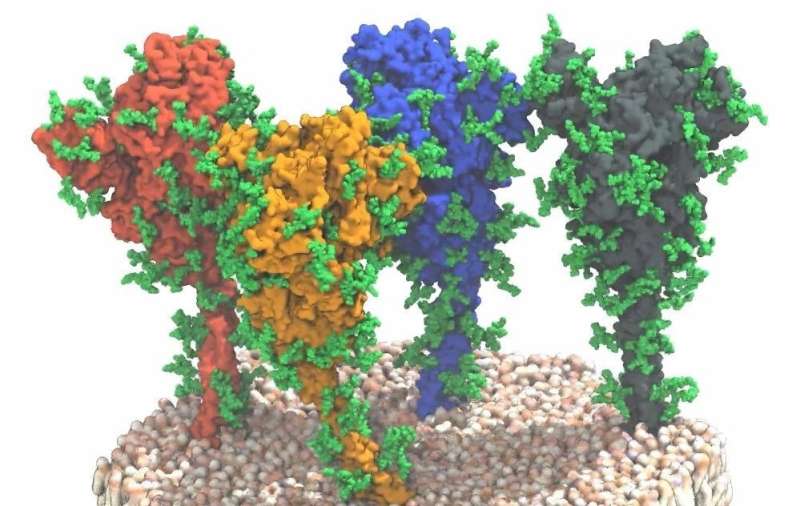High-speed model for the fight against SARS-CoV2

To contain the SARS-CoV2 coronavirus and slow the spread of infections and the rising death toll, researchers and health professionals around the world are rapidly developing vaccines and medical drugs. But before these can be tested in human clinical trials, they must first be thoroughly tested in animals. Mice are particularly well suited as model organisms because they are small and reproduce quickly. There are also well-researched inbreeding strains, from which all animals are genetically identical and can thus be easily compared.
For the coronavirus to enter human cells, it first needs to attach to a receptor molecule. This works on the lock-and-key principle: The key of the virus—a protein of the virus envelope—docks onto the lock—the human ACE2 receptor. However, SARS-CoV2 cannot penetrate the body cells of mice via the murine ACE2 receptors because the key does not fit the lock. The key—the virus protein—cannot be changed. But the lock can. When the human ACE2 receptor is introduced into the mouse genome, the course and treatment of a SARS-CoV2 infection can be studied in mice.
Mice with human receptor variant
In a cooperative project between Hans Schöler from the Max Planck Institute for Molecular Biomedicine in Münster and colleagues from China, mice have been genetically modified so that they develop the human ACE2 receptor on the surface of their cells. To do this, the scientists used a technology from stem cell research—tetraploid complementation—which involves fusing the cells of a two-cell donor embryo. Because cells normally contain two copies of each chromosome, fusion produces cells with four sets of chromosomes. These tetraploid cells can no longer form a living embryo but rather develop exclusively into the cellular envelope layer that gives rise to the placenta and umbilical cord. If embryonic stem cells are placed between the tetraploid cells, the stem cells develop into an actual, viable embryo.
Using CRISPR-Cas9 genetic scissors, the scientists introduced the human ACE2 receptor (hACE2) into the embryonic stem cells of mice. With tetraploid complementation, these genetically modified stem cells developed into mouse embryos, which can make the receptor in a similar way to humans. After the genetically modified mice were infected with SARS-CoV2, the researchers were able to detect the virus in the lungs and respiratory tract of the mice, among other places. "The disease progresses in the mice much like COVID-19 does in humans," says Hans Schöler. For example, an infection can also cause acute respiratory distress syndrome and lung damage in mice. Treating the mice with neutralizing antibodies suppresses viral replication in the lungs and respiratory tract—as it does in humans. "Our mice are therefore a good model system for investigating the effect of neutralizing antibodies or drugs against the coronavirus, for example," explains Schöler.
Transgenic mice in record time
Thanks to the new technology, the researchers have developed genetically modified hACE2 mice in record time. Depending on the success of breeding, other procedures (e.g., the injection of embryonic stem cells into blastocysts) can take up to several months before the first transgenic mice are generated. Although nuclear transfer is as fast as tetraploid complementation, it is extremely complicated. The chromosomes must be removed from a donor egg cell with a thin cannula and the genetically modified genetic material must then be introduced into the egg cell. The success rate is extremely low. "Tetraploid complementation, on the other hand, is comparatively simple," says Schöler. "This makes it possible to establish completely different mouse models for infection with SARS-CoV2 in only 35 days."
It is particularly helpful that genes in embryonic stem cells can be modified and studied very efficiently before they are used in tetraploid complementation. "This reduces not only the time required—from many months to a few weeks—but also the number of mice required for this purpose," says Schöler. Although dealing with the current pandemic takes priority, these technologies could also help infectious disease specialists to quickly respond to the threat of new pathogens.
More information: Feng-Liang Liu et al. Rapid generation of ACE2 humanized inbred mouse model for COVID-19 with tetraploid complementation, National Science Review (2020).
Provided by Max Planck Society















